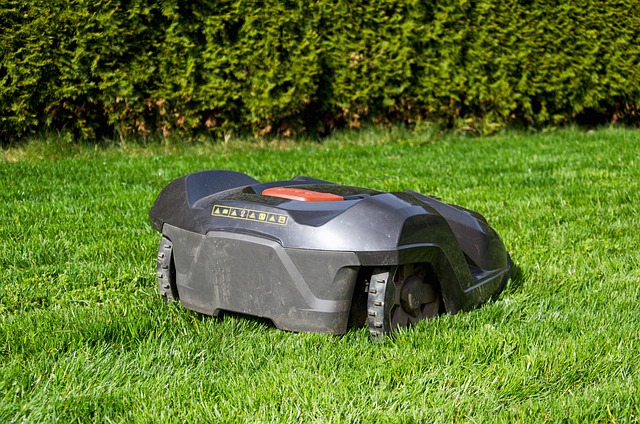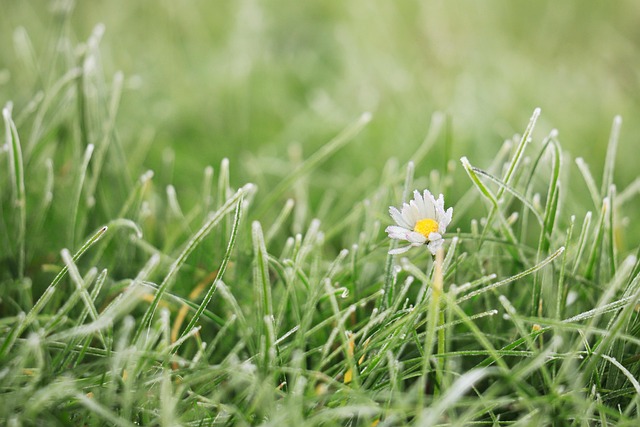Managing brown spots on lawns in Aurora requires understanding common causes like water scarcity, heavy traffic, fungal diseases, poor soil structure, and nutrient imbalances. Seasonal growth management is key; implement tailored strategies including aeration, fertilization, regular watering, dethatching, and protective mulching. Monitor spots regularly to prevent and treat issues promptly, promoting a vibrant lawn year-round. Proper watering, judicious fertilization, and seasonal maintenance like aeration, overseeding, and spot treatment with grass seed are essential for Aurora's climate variations, minimizing brown patches from root rot or drought stress.
In the vibrant landscape of Aurora, maintaining a lush green lawn can be challenging due to various seasonal factors. This article delves into the common causes behind unsightly brown spots on your lawn, specifically addressing the unique environmental conditions in Aurora. By understanding these issues, you’ll gain valuable insights into effective seasonal growth management strategies. We provide preventative measures and maintenance tips to ensure your lawn thrives year-round, keeping it healthy and free from bothersome brown spots.
- Understanding Brown Spots: Common Causes Unveiled
- Seasonal Growth Management Strategies
- Preventive Measures and Maintenance Tips for Healthy Lawns
Understanding Brown Spots: Common Causes Unveiled

Brown spots on your lawn in Aurora can be a concerning sight, but understanding their common causes is the first step towards effective management. These unsightly patches often result from various factors, ranging from environmental conditions to improper care practices. One of the primary culprits is lack of water, especially during hotter months when evaporation rates are high. Insufficient irrigation leads to drought stress, causing grass to turn brown and die. Another frequent cause is over-traffic or heavy use of lawn areas, which can compact soil and starve grass roots of essential nutrients and oxygen.
Moreover, certain types of grasses are more susceptible to specific diseases caused by fungi or bacteria. These pathogens thrive in moist conditions, so regular watering during dry spells might exacerbate the problem. Moreover, poor soil structure, nutrient deficiencies, or imbalances can contribute to brown spots. Compacted soils prevent water and air penetration, while nutrient deficiencies weaken grass, making it more vulnerable to stress and disease. Identifying these common causes is key to implementing targeted solutions for a healthier lawn.
Seasonal Growth Management Strategies

Lawn plant seasonal growth management involves tailored strategies to ensure your lawn thrives year-round. In spring, aerate and fertilize to combat winter damage and encourage new growth. Summer calls for regular watering, especially in hot, dry periods, to maintain lushness. As autumn arrives, dethatching can help remove dead organic matter, improving air circulation and nutrient absorption. Winter maintenance includes mild mowing and applying a protective layer of mulch to safeguard against extreme cold and snow damage.
Addressing common causes of brown spots on lawns in Aurora is crucial during seasonal management. These spots often signal issues like lack of water, heavy foot traffic, or pest infestations. Regular monitoring and prompt action, such as adjusting watering schedules, reducing footfall, or treating for pests, can prevent and heal these discolored areas, contributing to a vibrant, healthy lawn year-round.
Preventive Measures and Maintenance Tips for Healthy Lawns

Maintaining a lush, green lawn requires consistent care and attention, especially during the different seasons. One common issue many homeowners in Aurora face is brown spots, which can be caused by various factors. Preventive measures are key to keeping your lawn healthy and vibrant. Regular watering is essential, ensuring the soil stays moist but not waterlogged. Overwatering or under-watering can lead to root rot or drought stress, both of which cause brown patches. Additionally, Aurora’s climate demands a balanced approach; while regular feeding with nutrient-rich fertilizers promotes growth, excessive use may burn the grass.
To keep your lawn in top condition, consider a seasonal maintenance plan. Aeration is beneficial during spring and fall to reduce soil compaction, allowing better water absorption. Overseeding in late summer or early fall helps replenish the turf’s density. Addressing brown spots promptly is crucial; patching with fresh grass seed and ensuring adequate moisture will encourage new growth. Regular mowing at the appropriate height and removing debris are also vital for a healthy lawn, promoting strong root development and minimizing pest attractants.
Maintaining a lush, green lawn in Aurora requires understanding and managing seasonal growth patterns. By identifying common causes of brown spots, such as drought, compacted soil, or pest infestations, homeowners can proactively implement effective management strategies. Adopting preventive measures, including regular watering, aeration, and fertilizing, ensures your lawn stays healthy throughout the year. With these practices, you can minimize brown spots and foster a vibrant lawn that becomes the envy of your neighborhood.
